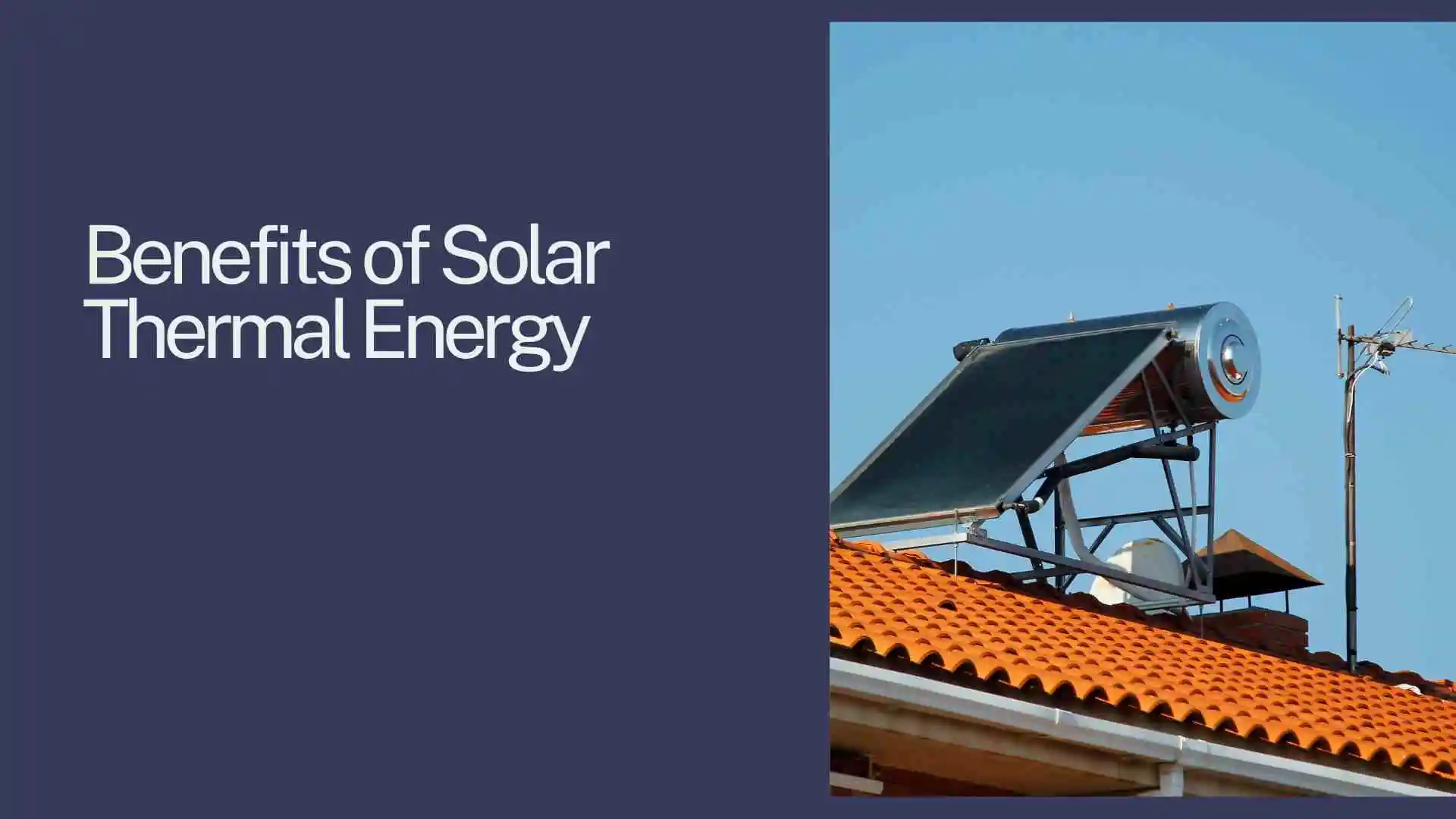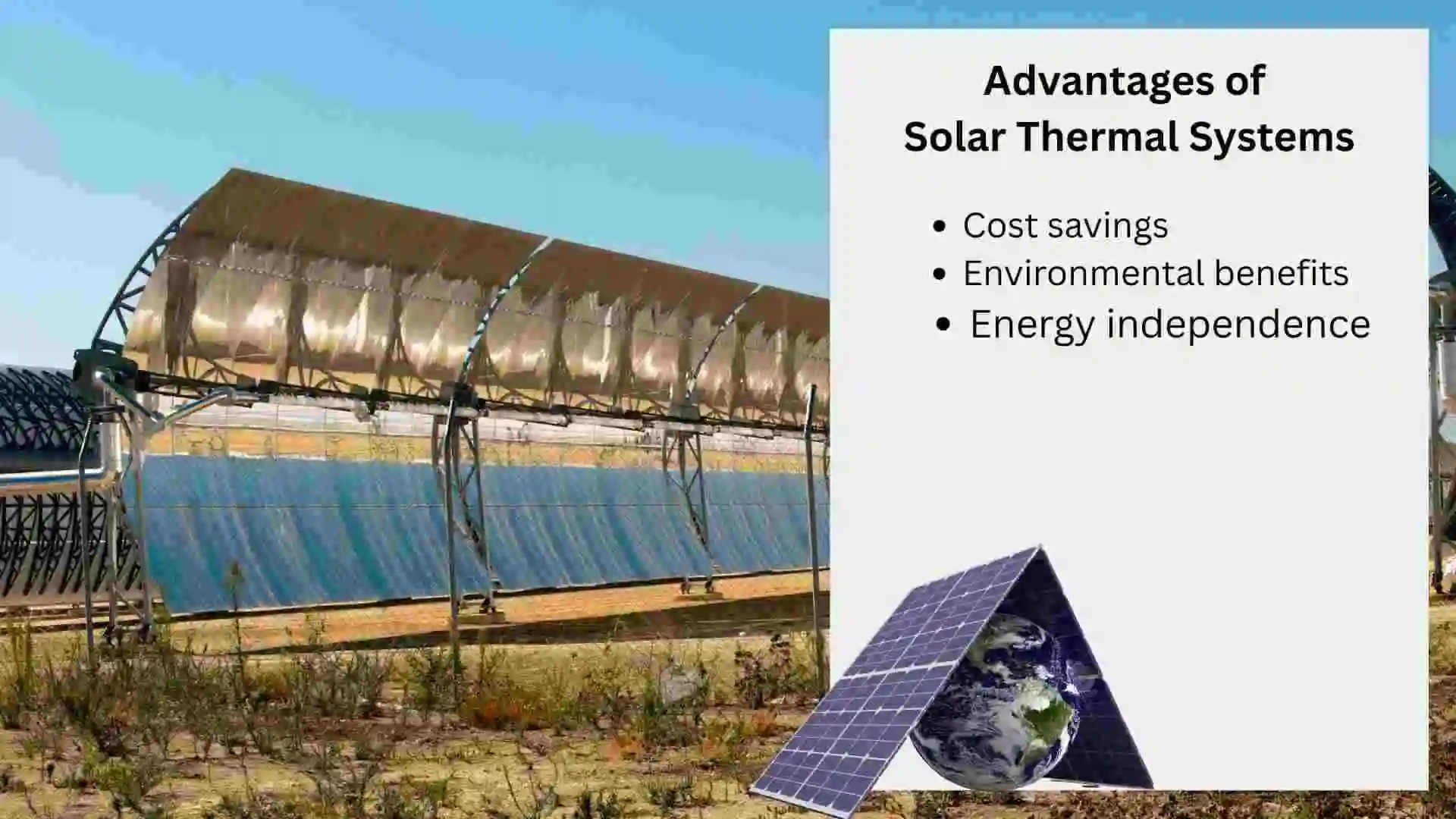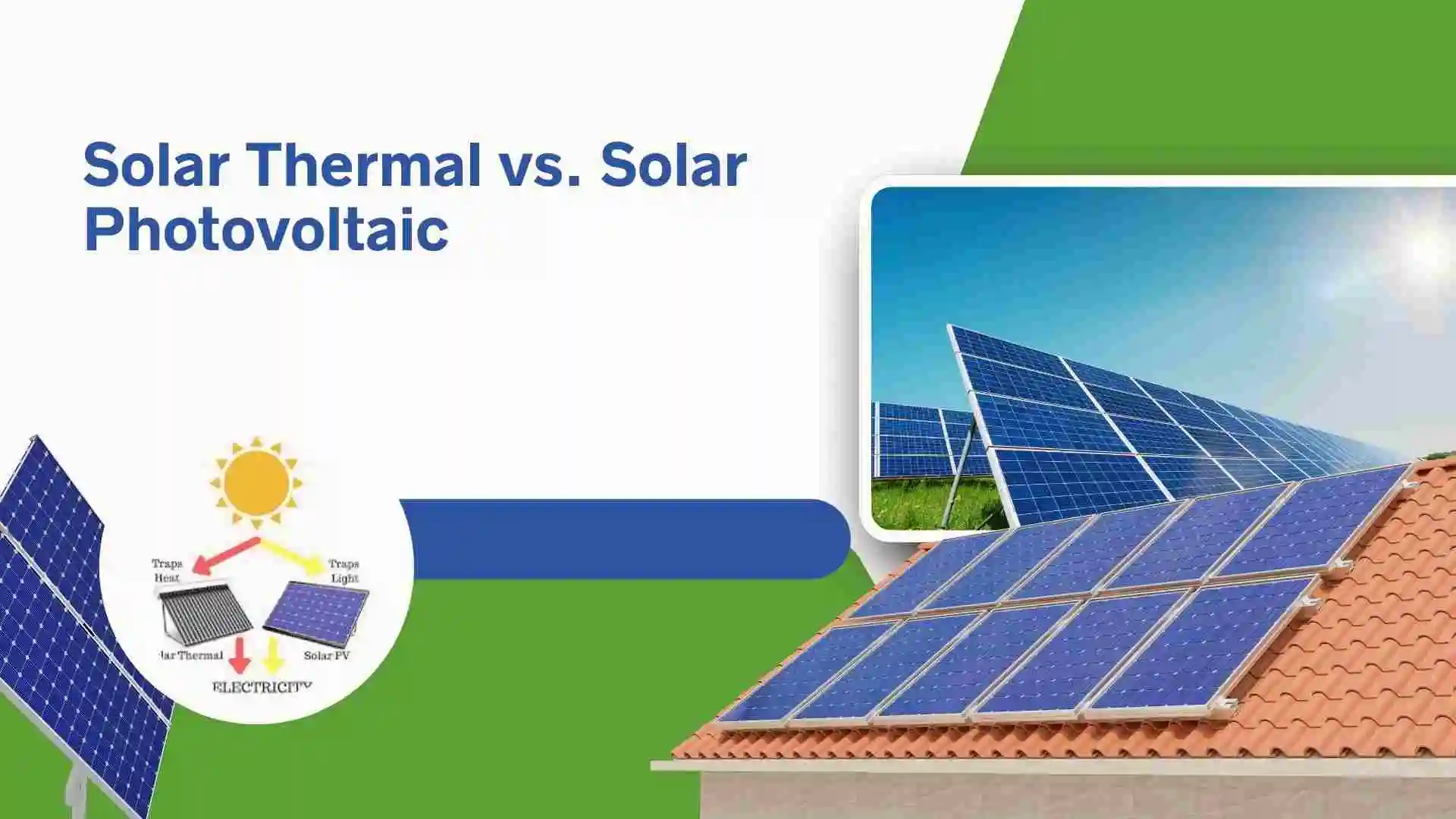Everything You Need to Know About Solar Thermal Systems in 2025
Solar thermal systems are becoming a popular choice for both residential and commercial energy needs. They harness the power of the sun to efficiently heat water and spaces. With the increasing push for renewable energy, thermal systems are not only reducing utility bills but also minimizing environmental impact.

In this guide, we’ll take a deep dive into solar systems, how they work, their benefits, types, and applications. If you’re considering adopting this technology in 2025, this article will help you make an informed decision.
If you want to know complete details about sustainable solar system then please visit Sustainability of Solar Power.
What is a Solar Thermal System?
A solar thermal system captures sunlight and converts it into heat. Unlike solar panels, which generate electricity, solar thermal system are designed specifically for heating purposes. They are commonly used for heating water, providing space heating, or even in industrial processes.
Solar systems are energy-efficient and offer long-term savings, especially in sunny regions. They are also environmentally friendly, using clean, renewable energy from the sun.
How Solar Thermal Work – A Simple Breakdown
Thermal systems are composed of three main components: solar collectors, a heat transfer fluid, and a storage tank. The collectors capture sunlight and convert it into heat, which is then transferred to the fluid. The heated fluid is stored in a tank for later use.
This process is simple and efficient, making solar thermal system easy to implement and maintain.
Benefits of Solar Thermal Energy
There are several advantages to using thermal systems. They reduce reliance on traditional heating methods, lower energy bills, and have a minimal environmental impact. They also require less maintenance than conventional systems.

Here’s a quick summary of the benefits of solar thermal:
| Benefit | Description |
|---|---|
| Energy Efficiency | Solar thermal are up to 70% efficient in converting sunlight to heat. |
| Cost Savings | They significantly reduce heating costs over time. |
| Environmental Impact | Zero emissions during operation, reducing your carbon footprint. |
| Low Maintenance | Requires minimal maintenance compared to traditional heating systems. |
Why Choose Solar Thermal for Your Home or Business?
Thermal systems offer an eco-friendly solution for heating water and spaces. They can significantly lower energy bills, especially in areas with plenty of sunlight. These systems are also reliable and durable, providing years of trouble-free service.
The cost-effectiveness and sustainability of thermal systems make them a smart choice for both residential and commercial installations.
Key Advantages of Solar Thermal Systems Over Traditional Heating Methods
Compared to conventional heating systems, thermal systems have many advantages. They use clean energy from the sun, which is renewable and free. They also have lower operational costs because they don’t require fuel or electricity to run.

Additionally, solar systems are more energy-efficient than traditional heating systems, making them a better long-term investment.
Types of Solar Thermal
Solar systems can be divided into two main categories: active and passive systems. Active systems use pumps or fans to circulate heat transfer fluid, while passive systems rely on natural convection. Choosing the right type depends on factors like energy needs, climate, and budget.

Active vs. Passive Solar Thermal – What’s the Difference?
| System Type | Description | Best For |
|---|---|---|
| Active Systems | Uses pumps or fans to circulate heat transfer fluid. | Larger systems, colder climates, and higher energy demands. |
| Passive Systems | Relies on natural circulation of heat transfer fluid. | Smaller systems and warmer climates. |
Active systems are generally more efficient and suitable for larger applications. Passive systems are simpler and more affordable, making them ideal for smaller setups.
Choosing the Right Solar Thermal System for Your Needs
When choosing a solar thermal system, consider factors like climate, system size, and energy requirements. If you live in a region with a lot of sunlight, a passive system may be enough. However, for colder climates or larger buildings, an active system might be a better fit.
Concentrated Solar Power (CSP) vs. Flat Plate Collectors – Which is Best?
| System Type | Description | Best For |
|---|---|---|
| CSP Systems | Uses mirrors or lenses to concentrate sunlight onto a small area. | Large-scale industrial applications. |
| Flat-Plate Collectors | Uses flat panels to collect sunlight and convert it into heat. | Residential and commercial applications. |
CSP systems are more suitable for industrial uses that require large amounts of heat, while flat-plate collectors are typically used for residential applications.
How Does a Solar Thermal System Save Energy and Reduce Costs?
Solar thermal save energy by capturing the sun’s free energy to heat water or air. By reducing reliance on electricity or gas for heating, these systems lower energy consumption and reduce heating costs.
Energy Efficiency and Cost Savings with Solar Thermal Heating
Solar systems are highly energy-efficient. They typically convert up to 70% of sunlight into usable heat, which is much higher than the efficiency of traditional heating methods. Over time, the savings on energy bills can offset the initial cost of installation.
| Factor | Details | Impact on Energy and Cost |
|---|---|---|
| Efficiency Rate | Solar systems are up to 70% efficient in converting sunlight to heat. | High efficiency ensures optimal use of solar energy. |
| Installation Cost | Initial installation costs range based on system size and complexity. | The upfront cost can be high, but it pays off over time. |
| Energy Savings | Savings on heating costs can reach up to 50-70% annually. | Long-term energy savings due to reduced dependency on fossil fuels. |
| Payback Period | Typically 5-10 years for full return on investment. | After payback, energy costs decrease significantly, providing ongoing savings. |
| Maintenance Costs | Minimal maintenance required, mostly periodic checks and cleaning. | Low maintenance costs make it cost-effective in the long run. |
| Lifespan | Thermal systems can last 20-25 years with proper maintenance. | Longevity ensures long-term cost savings without needing frequent replacements. |
Understanding Solar Thermal Payback Period and Long-Term Savings
The payback period for thermal systems varies depending on system size, installation costs, and local energy prices. On average, most solar systems pay for themselves within 5 to 10 years.
After the payback period, the system continues to save on energy costs, offering long-term savings for the user.
Solar Thermal Installation – What You Need to Know
Installing a solar thermal system requires professional expertise. It’s important to choose a certified installer to ensure the system operates efficiently and effectively.
Steps Involved in Installing a Solar Thermal System
Here are the basic steps involved in installing a solar thermal system:
How to Choose the Right Installer for Your Solar Thermal System
Choose an installer with experience and certifications in solar thermal technology. Look for reviews and references to ensure they provide quality service.
A good installer will ensure that the system is set up correctly, providing long-lasting performance.
Solar Thermal vs. Solar Photovoltaic – Key Differences Explained
Both solar thermal and solar photovoltaic (PV) systems use sunlight, but they serve different purposes. Solar PV systems generate electricity, while solar thermal generate heat.

Choosing between them depends on whether your primary need is heating or electricity.
What Makes Solar Thermal System Unique Compared to PV Solar Panels?
| System Type | Generates | Best For |
|---|---|---|
| Solar Thermal | Heat (water, air) | Water heating, space heating. |
| Solar PV | Electricity | Powering electronics, appliances. |
While solar PV panels generate electricity, solar thermal focus on heating applications, making them complementary technologies.
Combining Solar Thermal and PV Systems for Maximum Efficiency
Combining both systems allows you to get the most out of solar energy. Solar systems provide heat for water and space, while PV systems generate electricity for other uses. This combination is ideal for energy independence.
Solar Thermal for Different Applications
Solar thermal can be used for a wide range of applications, from domestic water heating to large-scale industrial uses. They are flexible and adaptable to various energy needs.
Solar Systems for Domestic Heating – A Complete Guide
Solar thermal are perfect for heating water in homes. In sunny regions, they provide a consistent and cost-effective solution for reducing energy bills.
These systems are easy to install and require little maintenance, making them a great option for homeowners.
Commercial and Industrial Applications of Solar Thermal Energy
In commercial and industrial settings, thermal systems are used for heating water, space, and even in industrial processes. They are especially effective in hotels, hospitals, and factories, where large amounts of hot water or heat are needed.
Environmental Impact of Solar Systems
Solar thermal have a positive environmental impact. They reduce carbon emissions by using clean, renewable energy from the sun.

These systems contribute to a greener, more sustainable future by replacing fossil fuel-based heating methods.
| Environmental Factor | Details | Impact on the Environment |
|---|---|---|
| Carbon Emissions | Solar systems produce no emissions during operation. | Helps reduce greenhouse gas emissions and air pollution. |
| Renewable Energy Source | Thermal systems rely on the sun, a renewable resource. | Contributes to reducing dependency on non-renewable energy sources. |
| Reduction in Fossil Fuel Use | By replacing traditional heating methods, solar thermal reduce fossil fuel consumption. | Decreases the environmental impact associated with fossil fuel extraction and burning. |
| Waste Generation | Minimal waste during operation; only occasional replacement of parts is needed. | Lower environmental waste compared to conventional heating systems. |
| Water Usage | Water is used in the heating process, but consumption is minimal compared to other energy production methods. | Reduces water usage compared to some traditional power plants. |
| Sustainability | Solar systems have a long lifespan and require minimal resources for maintenance. | Encourages sustainable energy practices, reducing overall ecological footprint. |
How Solar Thermal Energy Contributes to a Cleaner Environment
By reducing reliance on fossil fuels, solar thermal system help lower greenhouse gas emissions. They play an important role in the global effort to combat climate change.
Reducing Your Carbon Footprint with Solar Thermal Systems
Using solar systems reduces your carbon footprint. By relying on the sun for heat, you are contributing to a cleaner and healthier environment.
Challenges and Limitations of Solar Thermal Systems
While solar thermal are effective, they do come with some challenges. These systems depend on sunlight, so they may not work as efficiently during cloudy days or in colder climates.
Common Issues with Solar Thermal System and How to Overcome Them
The most common issue is system performance during cloudy weather. To address this, some systems include backup heaters for consistent performance year-round. Regular maintenance can also help extend the life of the system.
Maintenance and Lifespan of Solar Systems – What to Expect
Solar thermal are durable and can last up to 25 years. Routine maintenance, like cleaning the collectors and checking fluid levels, will ensure the system runs smoothly.
The Future of Solar Thermal Energy
Solar thermal technology continues to evolve, with new innovations improving efficiency and affordability. As renewable energy becomes more widespread, solar thermal will play a key role in global energy solutions.
Innovations and Trends in Solar Thermal Technology for 2025 and Beyond
In the coming years, expect to see more advanced solar collectors, better heat storage options, and greater integration with other renewable energy sources.
Solar Thermal Energy’s Role in the Global Shift Towards Clean Energy
Solar thermal energy is vital in the global shift to clean energy. It offers a sustainable way to meet heating needs while reducing reliance on fossil fuels.
Conclusion
Solar thermal systems are an eco-friendly and cost-effective solution for heating water and spaces. They use the sun’s energy to provide a clean alternative to traditional heating methods. In 2025, they are essential for reducing our carbon footprints and promoting renewable energy.
These systems offer long-term savings by lowering energy consumption. Though the initial cost can be high, the payback period is short, and the benefits last for years.
For both homes and businesses, solar thermal systems reduce energy costs and help protect the environment. As technology improves, these systems will become even more efficient and affordable.
